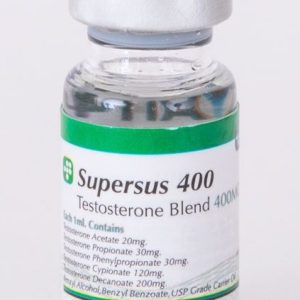
Although not everyone who develops acne uses steroids, acne is by far the most obvious indicator of steroid usage. Other issues are far more prevalent, such as acne, excessive stretch marks on the skin, and male-pattern baldness in young men and women. According to a poll of powerlifters, 53% of them had acne, 47% had more body hair, 27% had more greasy skin and hair, and 20% had lost scalp hair. Steroids may exacerbate already severe skin diseases. If they continue using the medicines, athletes who are being treated for acne frequently stop responding to standard treatment regimens.
Oral and injectable types of steroids are equally responsible for steroid-related acne. Even when an athlete stops using steroids, this type of acne may continue for a long period and not necessarily respond to standard medical therapy. A delayed healing response is frequently seen in athletes who continue to take steroids while receiving acne therapy, which shows that steroids have a significant impact on the development of acne.
Most prevalent skin conditions
are a few of the most prevalent skin conditions:
- Sebaceous glands
- Stretch-mark
- keloids
- Hereditary coproporphyria
- Family angiolipomas
- Psoriasis
Sebaceous glands
Sebaceous glands, which lubricate the skin, are found in the skin. Similar to how using anabolic steroids increases size, it also causes the sebaceous glands to enlarge and generate more sebum. Comedones are produced as a result of this in conjunction with aberrant keratin synthesis in the skin. Preacne lesions with higher concentrations of skin lipids including cholesterol and free fatty acids make up these lesions. Bacteria that are usually dormant in the skin thrive on those fats because they function as a banquet for them. Their feast results in the production of highly inflammatory end products in the skin follicles, which causes the inflammation associated with acne.
Stiffness Marks
While steroids promote muscular growth throughout the whole body, the neck, chest, shoulders, and upper arms show the most notable improvements. Additionally, stretch marks are most prevalent in certain locations. Stretch marks appear when the skin’s growth outpaces the underlying muscular tissue proportionately. By interfering with the development of collagen, a key skin structural protein, steroids exacerbate them by causing a lack of skin suppleness and an increased propensity for stretch marks. When steroid use is discontinued, muscle growth may decrease, but stretch marks are still there. Although there is no known cure, several therapies are available to prevent stretch marks from developing.
Keloids
Another kind of scar tissue is keloids, which are more typical in persons with darker skin than lighter skin. In one research, athletes who took oral and injectable anabolic steroids, including bodybuilders and hockey players, had more keloid lesions. While the keloids remained on the skin after the athletes quit taking steroids, no new lesions appeared. None of the players in that research had any prior history of keloid development. Since collagen makes up a big portion of keloids and the majority of other types of scar tissue, the keloids may be linked to the overproduction of collagen caused by steroid use in the skin. One study discovered that people who took high amounts of anabolic steroids had reduced breakdown and increased production of type -1 collagen.
Psoriasis
In the autoimmune illness psoriasis, immune cells assault skin cells for an unidentified cause, resulting in red, scaly areas. One bodybuilder had been using a topical ointment to manage his psoriasis, but when he started using steroids, his condition significantly worsened. His psoriasis eventually developed a resistance to therapy. However, after he stopped using steroids, his psoriasis stabilised and began to react to a straightforward skin cream regimen once more.
Angiolipomas in families
Familial angiolipomas are fatty skin tumours that are a different disorder. Anabolic steroid use can cause tumours to become larger and more numerous. It was discovered through analysis of fat cells that these cells included androgen receptors, suggesting that the hormones may have interacted with these receptors in the fatty tumours to promote proliferation and growth.
Coproporphyria hereditary
Additionally, studies suggest a connection between anabolic steroids and the peculiar disease known as hereditary coproporphyria. Purple urine and enhanced sensitivity to sunlight are two symptoms of this hereditary condition, which is brought on by a deficiency in a specific enzyme. In one instance, a person who had never before experienced any sickness symptoms developed blisters on their hands and face.

